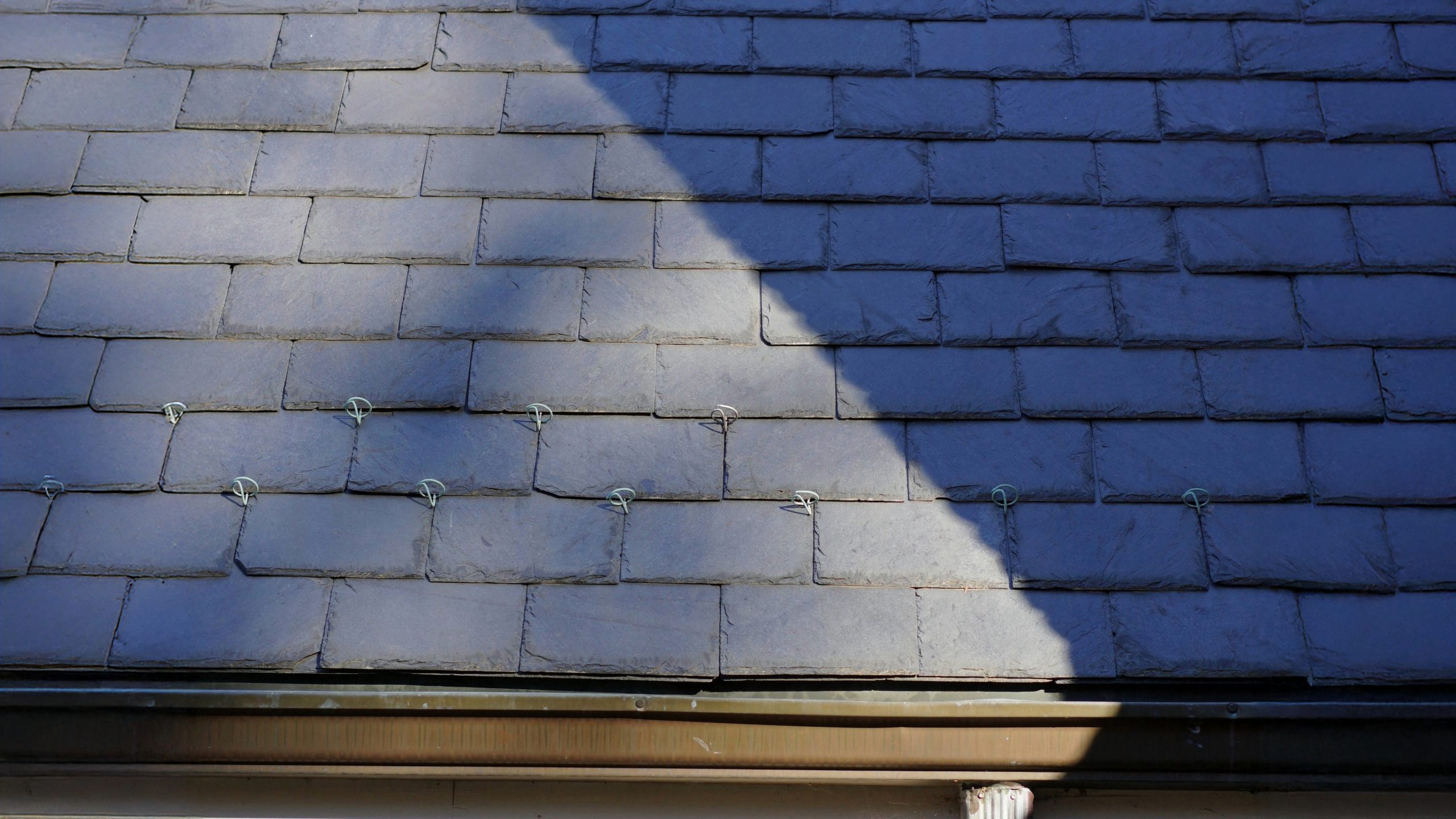Your Summer Slate Roof Guide: Structure, Style, and Smart Choices
When Richmond’s summer storms roll through, you want a roof system that’s not just beautiful but built to last. At Hammersmith Roofing & Construction, we assist homeowners and property managers throughout the Richmond area in upgrading their roof covering choices with timeless materials that withstand the test of time. If you’re looking for a fire-resistant roof covering with exceptional curb appeal and low maintenance costs, slate roofing may be the perfect match for you.
Slate tiles and slate shingles have long been a hallmark of Virginia’s historic roofs. Their natural durability, visual elegance, and eco-friendly product profile make them a standout option for both residential and commercial properties. And when installed using traditional roofing methods by a trusted contractor like Hammersmith, slate becomes more than just a roofing material—it becomes a statement of craftsmanship. In this blog, we’ll show you why slate is truly the durable way to roof your home this summer.

What Makes Slate Roofing So Durable?
Natural Strength Meets Historic Beauty
Slate roofing tiles are cut from metamorphic rock formed under high pressure and heat, resulting in a dense, water-resistant material that can last well over a century. Slate isn’t just any roofing material; it offers exceptional protection against water migration, hail, and wind. That’s why it has been used on historic roofs for generations, especially in regions like Richmond, where both beauty and resilience are valued.
The Difference Between Slate Tiles, Slate Shingles, and Rustic Slate Shingles
While the terms are sometimes used interchangeably, slate tiles typically refer to rectangular pieces used in flat patterns, often arranged in a herringbone or basketweave pattern. In contrast, slate shingles may include rustic slate shingles with a rougher surface texture and more varied shapes. These styles contribute to a hang down appearance that adds depth and character to the roof. Textural slate styles are also increasingly popular with homeowners who want traditional looks with modern flair.
Water Migration and Joint Offset: How Slate Protects Your Roof System
One of the key reasons slate roofing lasts so long is its resistance to water migration. When installed correctly, the overlapping pattern of slate tiles prevents moisture from seeping into the layers beneath. This system is strengthened further by strategic joint offset—the staggered placement of shingles that ensures no two seams line up vertically. This installation method, combined with copper or stainless steel roofing nails, is designed to prevent roof leaks and keep the structure sealed tightly for decades to come.
Fire-Resistant Roof Covering Benefits
Homeowners in Central Virginia understand the importance of having a fire-resistant roof covering, especially during dry summer months or wildfire season. Natural slate doesn’t burn, melt, or emit toxic fumes. When paired with a strong roof slope and proper base flashing, slate becomes one of the most effective fire-resistant solutions available today. It’s no surprise that historic roof installation remains in high demand, as slate roofing continues to be trusted on Richmond’s most iconic homes.
Historic Roofs and Traditional Roofing Methods
Preserving Richmond’s Historic Homes with Slate
Richmond is full of numerous historic homes and buildings, many of which feature slate as their original roofing material. At Hammersmith Roofing & Construction, we specialize in restoring these iconic rooftops with the same care and craftsmanship used centuries ago. Our team understands the structural requirements and curb appeal demands of these buildings, ranging from residential row homes to churches and civic buildings.
Graduated Length Roofs and Hang Down Appearance
One distinguishing feature of many historic roofs is the use of graduated length roofs. This method starts with longer slate tiles at the eaves and shorter ones near the ridge, creating a natural-looking taper. It’s a visual trick that enhances the hang down appearance of the roof and adds a classic feel you won’t get with modern materials like asphalt shingles or synthetic shingles. When done correctly, it seamlessly blends form and function.
Base Flashing, Collector Heads, and Decorative Cornice Details
When restoring or installing slate on historic roofs, it’s not just about the shingles. Details such as base flashing, collector heads, and decorative cornice trim are essential for maintaining both architectural authenticity and functionality. These components protect against water infiltration and direct rain away from the structure, especially during heavy downpours in Richmond. Choosing the durable way means honoring every detail, not just the visible ones.
Installation Errors to Avoid on Historic Roofs
Historic roofs demand experienced hands. Even minor installation errors can lead to big problems, from cracked slate to improper alignment and roofing leaks. At Hammersmith Roofing & Construction, we combine traditional roofing methods with modern training and tools to get the job done right the first time. Our team also evaluates existing roof systems for issues with structural support and drainage before commencing any work.
Modern Alternatives and Slate-Inspired Materials
Fiber Cement and Synthetic Shingles as Durable Roofing Covering Choices
While natural slate is a premium option, some homeowners consider alternatives, such as fiber cement or synthetic shingles. These materials mimic the appearance of slate at a lower cost and lighter weight. Fiber cement is especially popular for its durability, textural slate finish, and fire-resistant properties. For projects that don’t require full historic replication, these roofing covering choices offer flexible solutions with strong curb appeal.
Metal Slate Panels and Architectural-Grade Metal Roofing
Metal slate panels and architectural-grade metal roofing are also gaining traction as modern solutions. These options often include a deflective coating that reduces solar heat absorption, contributing to overall energy savings. Their forged quality construction ensures performance in both residential and commercial roofing tasks, making them ideal for properties that face structural limitations due to roof weight or design.
Design Considerations and Structural Planning
Understanding Roof Weight and Structural Engineer Input
Slate is a heavy roofing material, which means proper planning is critical. Before installation, a structural engineer should assess your home’s ability to support the added roof weight. This step ensures the roof system remains stable for decades to come. Whether you’re replacing an older roof or upgrading from asphalt shingles, knowing your structural support needs is a crucial part of doing the job the durable way. If you’re unsure what your home can handle, a roof inspection is a smart first step.
Visualize Products: Number of Pieces per Bundle, Color Family, and Special Order Factors
When planning your slate or fiber cement roof, you’ll want to visualize products in detail. Factors such as the number of pieces per bundle, available color family, and special order lead times all influence the final look and timeline. At Hammersmith, we guide you through these options to ensure your roof aligns with both your design goals and your home’s historical character. This approach reflects our commitment to helping homeowners make informed choices, supported by a trusted Richmond roofer.
Curb Appeal, Longevity, and Eco Benefits
Curb Appeal That Lasts
Few roofing materials enhance curb appeal as much as slate. Its rich tones, rougher surface textures, and natural variation offer elegance and timeless beauty. Combined with copper gutters or gutter systems designed to match historic styles, your home gains not only protection but also presence. Whether you choose slate shingles or rustic slate shingles, the visual impact is immediate and lasting. If you’re considering color coordination, our experts can guide you through options that support both aesthetics and roof color curb appeal.
Disposal Wastes and Eco-Friendly Product Benefits
Slate and fiber cement are both eco-friendly product options because they have low disposal waste and long lifespans. Unlike materials that require frequent replacement, slate is built to last generations. That means fewer roofing tasks over time and less impact on landfills. Choosing slate or high-quality synthetic alternatives is a wise investment in both your home and the planet.
Ready to Build the Roof That Lasts a Lifetime?
Slate roofing isn’t just a style choice—it’s a commitment to quality, craftsmanship, and long-term value. With proper installation, structural planning, and attention to detail, your new slate roof can serve your home for a century or more. Whether you’re restoring historic roofs or exploring modern alternatives like fiber cement or architectural-grade metal roofing, trust Hammersmith Roofing & Construction to guide you in the durable way. Ready to take the first step? Contact Hammersmith Roofing to schedule your slate roof consultation today.





